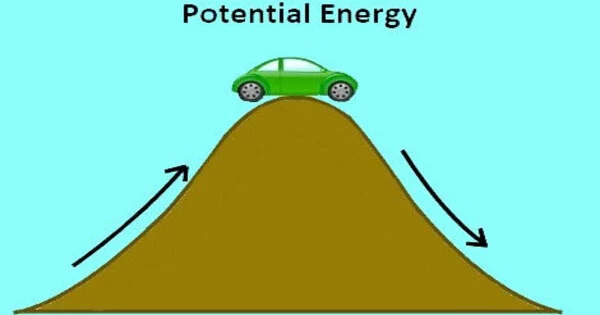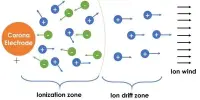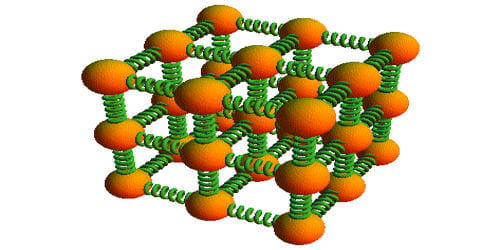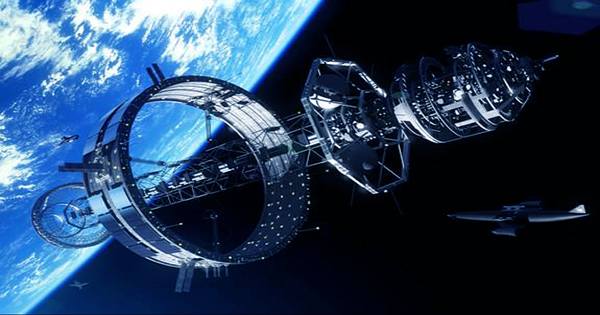Potential energy is the energy that results from a change in position or configuration. It is the energy that a body possesses as a result of its position or state. Because of its position, an object can store energy. In the case of a bow and arrow, when the bow is drawn, some energy is stored, which is responsible for the kinetic energy gained when the bow is released.
While an object’s kinetic energy is relative to the state of other objects in its environment, potential energy is completely independent of its surroundings. As a result, the acceleration of an object is not visible in the movement of a single object when other objects in the same environment are also moving. For example, a bullet whizzing past a person who is standing possesses kinetic energy, but the bullet has no kinetic energy with respect to a train moving alongside.
Similarly, when a spring is displaced from its equilibrium position, it gains some energy, which we can see in the form of stress in our hands when we stretch it. Potential energy is a type of energy that results from a change in its position or state. Let us learn the formula, unit, and examples of potential energy after we understand potential energy and its definition.
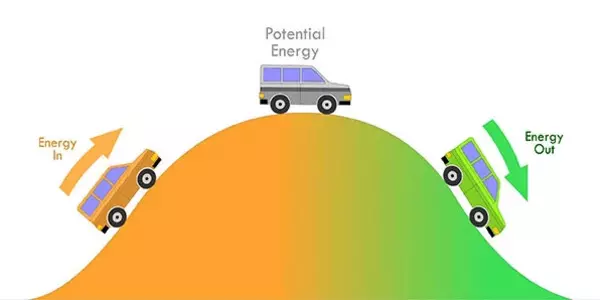
Potential Energy Formula –
The formula for potential energy depends on the force acting on the two objects. For the gravitational force, the formula is: W = m×g×h = mgh
Where,
- m is the mass in kilograms
- g is the acceleration due to gravity
- h is the height in meters
Potential Energy Unit:
Gravitational potential energy has the same units as kinetic energy: kg m2 / s2
Note: All energy has the same units – kg m2 / s2, and is measured using the unit Joule (J).
Potential energy is classified depending on the applicable restoring force.
(1) Gravitational potential energy – Potential energy is the potential energy of an object that is associated with gravitational force. When a book is placed on top of a table, the energy required to raise the book from the floor, as well as the energy possessed by the book as a result of its elevated position on the table, is referred to as gravitational potential energy. Gravity is the restoring force here.
(2) Elastic potential energy – Elastic potential energy is the energy possessed by an elastic body such as the bow and catapult when stretched and deformed in one direction. Elasticity, which acts in the opposite direction, is the restoring force.
(3) Chemical potential energy – Chemical potential energy is energy related to the arrangement of atoms and molecules in a structure. Chemical potential energy is the energy possessed by a substance due to the potential it has to undergo a chemical change by participating in a chemical reaction. When fuel is burned, for example, the chemical energy stored in the fuel is converted to heat.
(4) Electrical potential energy – Electrical potential energy is the energy that an object possesses as a result of its electric charge. There are two kinds of potential energy: electrostatic potential energy and electrodynamic potential energy, also known as magnetic potential energy.
(5) Nuclear potential energy – Nuclear potential energy is the potential energy held by particles (neutrons and protons) within an atomic nucleus. For example, in the sun, hydrogen fusion converts potential energy stored in solar matter into light energy.
Potential energy exists in systems with parts that exert forces on each other of varying magnitudes based on their configuration, or relative position. In the Earth-ball system, the force of gravity between the two is determined solely by the distance between them. The work done to separate them further apart, or to raise the ball, transfers additional energy to the system, which is stored as gravitational potential energy.
